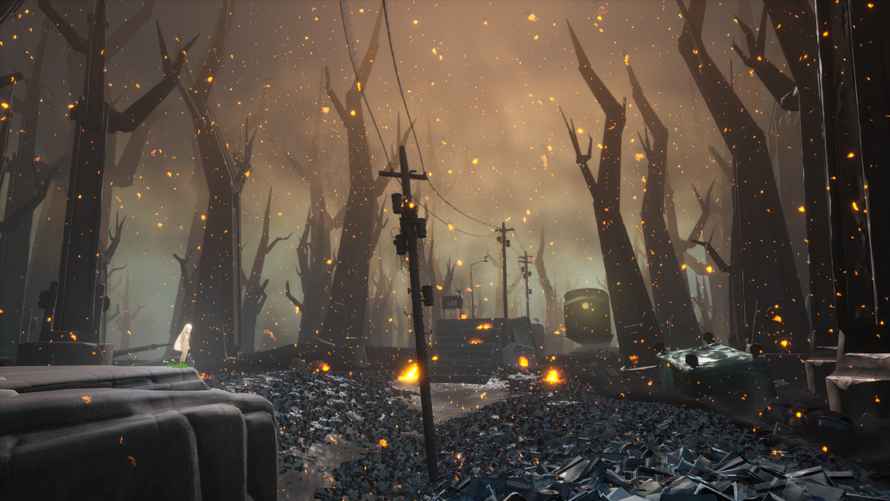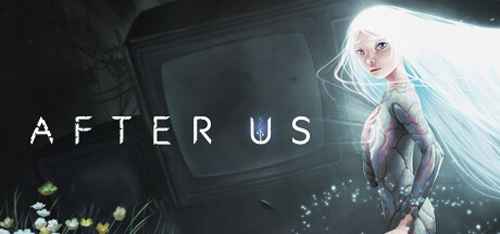After Us Review
Just in case you missed it, here’s some news: humans have been absolutely awful stewards of the planet. Over the past two centuries or so, our brilliant species has managed to lay waste to Mother Earth, replacing pristine landscapes with bubbling pools of sludge and piles of discarded washing machines. At least that’s the case in After Us, a new puzzle platforming game.
Light in the Darkness
In After Us, you play a young girl named Gaia, who witnesses her bucolic, verdant world die before her eyes. Gaia’s task is to travel to eight biomes and free the spirits of animals, whose energy restores that part of the world. The suddenly extinct animals aren’t just threatened species like whales and elephants. They include dogs, pigs, and birds, too. Everywhere Gaia travels, she leaves behind a disappearing trail of green grass and flowers, bits of color in desolate landscapes.

While it might be a close cousin to a walking simulator, After Us is essentially a puzzle platformer. Gaia needs to avoid toxic, death-dealing sludge, rogue machinery, and other hazards. She has a few abilities to help her negotiate the world. She can temporarily transform a poisonous area into a verdant field, allowing her to move forward or reach a platform. Gaia can double jump and wall run, and shoot spirit energy towards specific points of light, opening doors and new areas.
Although it hints at being an action game, After Us doesn’t include combat, exactly. Players don’t need to worry about stamina or health or most mechanics common to the action genre. Instead, the goal is to look for a path through the wasteland, avoid the toxic areas, and take in the view. There are plenty of ways for Gaia to perish.
Floaty Jumps and Land of the Lost
Since platforming and movement are so critical to After Us, it’s a little disappointing that those mechanics aren’t just a bit more precise. Jumping in particular has a floaty quality that inhibits precision. Gaia doesn’t have a dodge mechanic, but she can dash, or at least can run quickly. This is important as there are often environmental elements trying to knock her away from safety. Landing in one of the toxic puddles means instant death and a checkpoint restart.
Levels are interestingly designed and although the game lacks a useable map, signposting is done relatively well. It’s easy, however, to miss an important path, resulting in some frustrating meandering around. Also, since the theme of After Us is environmental ruin, the landscapes can be pretty bleak and full of long stretches of not much happening.
In between levels, Gaia visits the Ark, a lush and green floating world full of trees and waterfalls. Visually, it’s a nice break from the other levels, but aside from being a hub of sorts, doesn’t add much real gameplay.

Apocalyptic Beauty
By far, After Us’ most impressive feature is its art direction and tone. The landscapes of a future world choked with decay, broken machinery, and oozing toxic waste are powerful and disturbing. An early level filled with towering, naked figures rushing towards — or from — destruction is haunting, like seeing the entombed survivors of Pompeii.
Between the electronic score, forlorn animal imagery, and Gaia herself, After Us delivers its tale of ecological disaster at the hands of humans. That said, the game is anything but subtle about its themes. The idea that we can recover lost nature with love and the flow of magical spirit energy is hopeful and inspiring. It’s also purposely naïve, and maybe neglects the massively difficult reality of really changing the direction of progress.
Wide Eyed Wonder
After Us is an artistic, moving, and affecting game about a world transformed by human indifference to nature. It’s a slightly heavy-handed cautionary tale, but a powerful one. As a puzzle platformer, it’s a little less successful, with controls that feel imprecise and levels that need more gameplay variety. After Us has a potent message and offers innocent hope for a planet in trouble.
***PC code provided by the publisher for review***
The Good
- haunting images and art
- relevant themes
- no combat
The Bad
- music meanders
- mechanics need refinement
- thematically heavy handed
- needs gameplay variety

